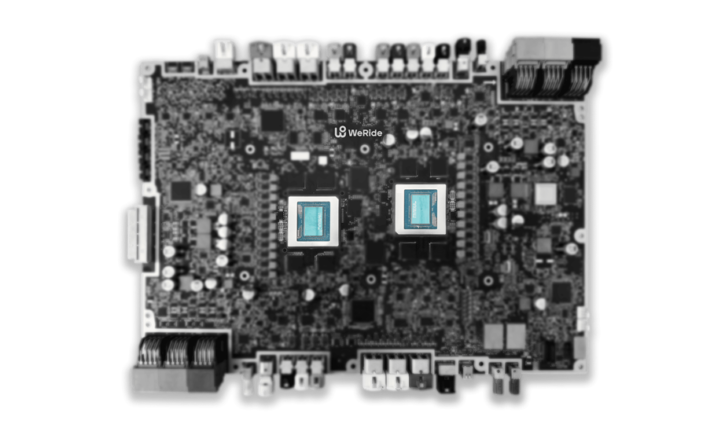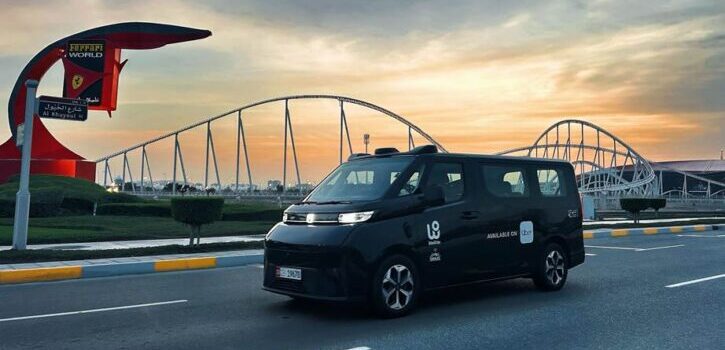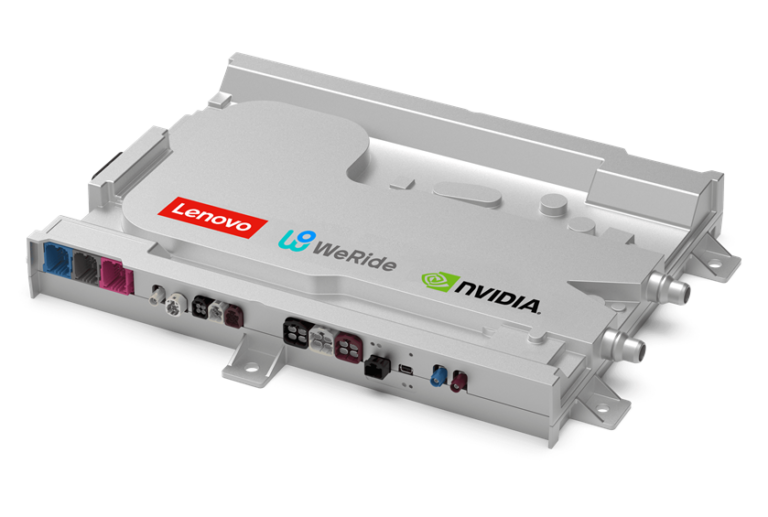WeRide has launched the HPC 3.0 high-performance computing platform, jointly developed with Lenovo and powered by Nvidia’s latest Drive AGX Thor chips. The new HPC 3.0 platform makes its debut in WeRide’s latest-generation Robotaxi GXR — making it the world’s first mass-produced Level 4 (L4) autonomous vehicle built on Nvidia Drive AGX Thor. Fully automotive-grade, HPC 3.0 reduces autonomous driving suite costs by 50%, paving the way for large-scale commercial deployment of GXR.
WeRide’s HPC 3.0 platform, featuring a dual Nvidia Drive AGX Thor configuration running the safety-certified DriveOS, is built on Lenovo’s AD1 L4 autonomous driving domain controller, delivering up to 2,000 TOPS of AI compute. It is the most powerful computing platform available to support L4 autonomy, according to WeRide.
Beyond core upgrades, HPC 3.0 boosts system integration, cutting mass-production costs to a quarter of HPC 2.0 and reducing autonomous driving suite costs by 50%. It also consolidates key modules such as ethernet gateway, CAN gateway, inertial navigation and collision detection, reducing production and maintenance expenses. WeRide says this lowers HPC 3.0’s total cost of ownership (TCO) by 84% over its lifecycle compared with its predecessor.
HPC 3.0 is certified to AEC-Q100, ISO 26262, and IATF 16949 standards. Its redundant design architecture meets the highest ASIL-D safety level, with a failure rate below 50 FIT (failures per billion hours of operation) and an MTBF (mean time between failures) of 120,000 to 180,000 hours.

Built for 10 years or 300,000km of use, it can operate in extreme temperatures from -40°C to +85°C and has passed tests for heat, shock and corrosion. HPC 3.0 is also fully compliant with global VOC environmental standards, making it suitable for deployment across the Middle East, Southeast Asia, Europe and other international markets, supporting WeRide’s goal of scaling its Robotaxi fleet worldwide.
“Our close collaboration with Lenovo and Nvidia represents a major breakthrough in computing power, system architecture and cost efficiency,” said Tony Han, founder and CEO of WeRide. “Integrating the HPC 3.0 platform into our Robotaxi GXR enhances vehicle reliability and responsiveness while significantly reducing deployment costs. Moving forward, we plan to extend this platform across more of our L4 autonomous vehicles — including the Robobus and Robosweeper — bringing smart, accessible mobility to more cities and customers worldwide.”
“We’re thrilled to see the successful deployment of Nvidia Drive AGX Thor on WeRide’s Robotaxi GXR, marking a significant step toward bringing L4 autonomous vehicles to market at scale,” added Donny Tang, VP and head of Lenovo vehicle computing. “Our close collaboration with WeRide on the AD1 domain controller has been instrumental in accelerating this innovation. Lenovo is committed to leveraging our advanced computing power and working with industry partners to drive the commercialization of autonomous driving solutions globally.”
Nvidia has been a strategic investor in WeRide since 2017 via the Nvidia Inception program. Ali Kani, VP of automotive at Nvidia, also extended congratulations to WeRide: “Robotaxis are reshaping urban mobility, and it’s exciting to witness the progress WeRide and Lenovo have made in deploying a Level 4 autonomous driving system built on Nvidia accelerated compute and DriveOS. Their achievement marks a significant milestone in helping to make safe, scalable and efficient autonomous transportation a reality.”
Nvidia Drive AGX Thor, Nvidia’s Drive AGX Orin successor, is built on the Nvidia Blackwell architecture and is optimized for the most demanding processing workloads, including generative AI, vision language models and large language models. Its simplified architecture enhances generalization, reduces latency and boosts safety by harnessing powerful Nvidia accelerated computing to run WeRide’s proprietary AV software stack.
As the world’s first publicly listed robotaxi company, WeRide says it has safely operated robotaxis on public roads for over 2,000 days, with the company continuing to scale its technology through a series of global partnerships.



